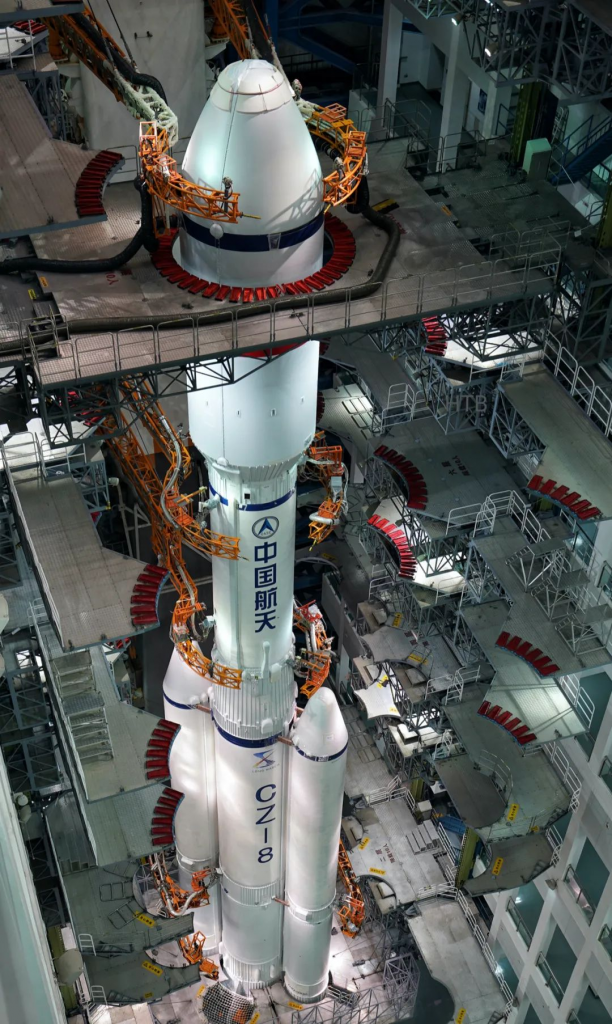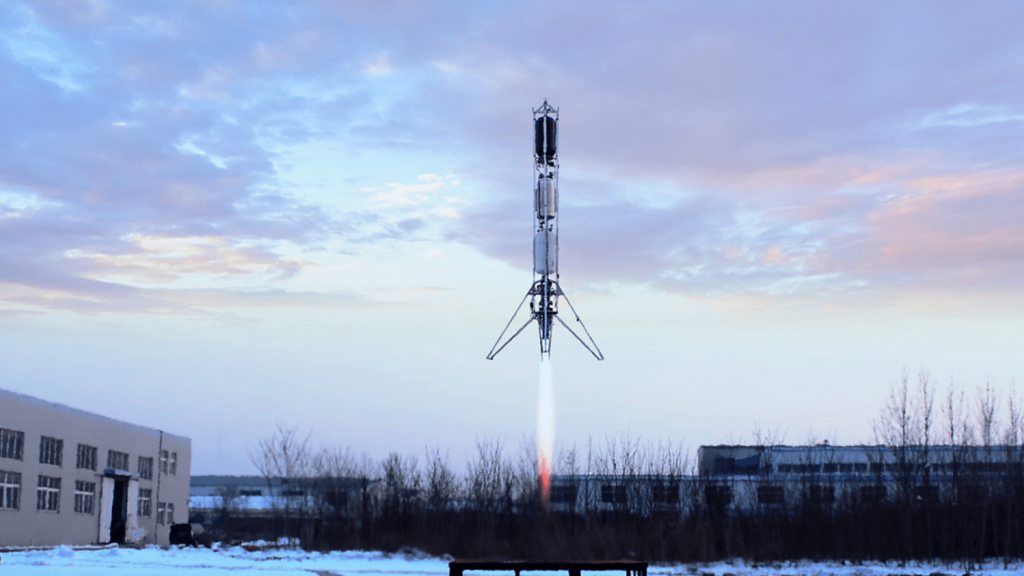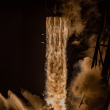Launch Window/Lift Off Time | December 22, 2020 – 04:00 UTC | 12:00 BJT |
|---|---|
Mission Name | XJY-7 & others (XJY means “new technology validation”) |
Launch Provider | China Aerospace Science and Technology Corporation (CASC) |
Customer | – China Association for Science and Technology (CAST) (XJY-7) – Guoadian Gaoke (Tianqi 12) – Ethiopian Space Science & Technology Institute (ESSTI) (ET-SMART-RSS) |
Rocket | Long March 8 |
Launch Location | LC-2, Wenchang Spacecraft Launch Site, Wenchang, Hainan, China |
Payload mass | Up to 5,000 kg (11,000 lbs) for SSO |
Where is/are the satellite(s) going? | Sun-synchronous Orbit (SSO) |
Will they be attempting to recover the first stage? | Not yet. They are working on a partially reusable version of this rocket that will launch in the next 3-5 years. |
Where will the first stage land? | It will crash back into the ocean in the South China Sea. |
Will they be attempting to recover the fairings? | No |
Are these fairings new? | Yes |
How’s the weather looking? | N/A |
This will be the: | – 1st ever launch of a Long March 8 – 38th launch from China in 2020 – 1st launch of an orbital-class (potentially) reusable rocket from China – 356th launch of a Long March rocket (any family) |
Where to watch | Official livestream (if available) |
What does all this mean?
China Aerospace Science and Technology Corporation (CASC) is launching a designed-for-reuse Long March 8 rocket for the first time. The primary payload is unknown but known as XJY-7. There are two known secondary payloads.
What’s the XJY-7 payload and what are the others?
The details of the primary payload have not been disclosed. Payloads on debut flights of rockets tend to be dummy items, mass simulators, or just development instrumentation. All we can say is that the payload is called XJY-7. XJY means “new technology validation”.
XJY-6 previously flew on a Long March 7A. It was a validation platform for some form of missile detection system.
Also on board are two smaller payloads. The first is the Tianqi 12 satellite made by Guoadian Gaoke. It is a 6U CubeSat. It is a demonstration payload for an “Internet of Things” (IoT) constellation. There will be 38 such satellites in the full constellation.
The second rideshare payload is called ET-SMART-RSS. It has been developed by the Ethiopian Space Science & Technology Institute (ESSTI) . The worked together with Beijing Smart Satellite Technology (SMART). This is also a 6U nanosatellite whose purpose is to offer Earth observation services. These will be offered to both China and countries in Africa.
Long March 8
The Long March 8 is China’s first venture into orbital-class reusable rockets. It is designed to replace the Long March 2 and Long March 3 rockets that use hypergolic fuels for their first stages. The rocket consists of:
- liquid-fueled side boosters
- center core (ignited at lift-off)
- upper stage
The rocket takes off from the island facility at Wenchang in Hainan province. Therefore it flies out over the ocean and there is no chance of the boosters landing on villages.
Long March 8 side boosters
The Long March 8 features two liquid-fueled side boosters, known as K2. They use RP-1 and LOX for propellant. Each booster has a single YF-100 engine. They are 26.9 m (88.3 ft) tall and 2.25 m (7 ft 5 in) wide.
When the side boosters have finished burning, they stay attached to the center core. This is unusual in orbital-class rockets.
The side boosters are believed to be based on those used on the Long March 11 rocket.

Center Core (first stage)
The center core, known as K3, has two YF-100 engines (the same as on the side boosters). Again, it uses RP-1 for fuel and LOX as oxidizer. It is 25.1 m (82.3 ft) tall and 3.35 m (11 ft) wide.

Unlike any other Chinese rocket beforehand, the center core is designed to have four landing legs! It will also have grid fins to be used when re-entering the atmosphere and landing.
The core stage is based on the Long March 7 which first flew in 2016. However the engine will have been adjusted to permit throttling and restart capabilities. The engines have a specific impulse of 300 seconds at sea level and 335 seconds in a vacuum.
The center core is thought to complete its burn about 15 seconds after the side boosters. On this flight, the center core and side boosters may attempt a “return to launch site” profile. However they will not attempt a full landing. The rocket will return the ocean just next to the launch facility.
Long March 8 second stage
This is based on the 3 m wide LH2 / LOX second stage for the Long March 3A rocket. It has two YF-75 engines on board. The stage is 12.4 m (82.3 ft) long and 3.0 m (9.8 ft) wide. The engines have a specific impulse of 438 seconds. The stage can deliver 4.3 km / s of DV.
Reusability
This is not the first exploration of reusable rockets in China. A private company, Linkspace, has been carrying out demonstration flights with vertical launch and landing capabilities. They intend to be ready to fly an orbital-class vehicle soon.

The Long March 8 however is the first orbital-class vehicle designed for reuse. The side boosters will not separate from the center core after they finish burning. Instead, the center core will return to the launch site and will in the future deploy four landing legs, just like the Falcon 9.
The first truly reusable version of the Long March 8 rocket is expected to fly in 2023-2025.






A couple points.
Firstly you’re gunna have a hard time deriving the LM8 liquid boosters from the LM11 given that all 4 stages of the LM11 are solid. This error comes from the fact that the boosters in the original design were solid, however this has since been changed to be liquid. The boosters are apart of the LM5-8 family, which aimed to used modularity to create a family of launchers. The same boosters are used on the LM7 and were slightly changed to act as the LM6 first stage.
Linkspace is a relatively minor player in Chinese reusable commercial launchers, simply because they are at small funding amounts (~20mil US$). iSpace and Landspace for example are more relevant, with both receiving funding >300mil US$ and both aiming to develop commercial methalox reusable MLV. iSpace should be demoing their hopper for the Hyperbola-2 VTVL reusable first stage next year with a launch in 2022 (maybe 2021, though schedule slides right generally). Landspace will be launching Zhuque-2 next year (a fully methalox vehicle which might be able to get crown for first methalox launch) though like LM8 initially it will be expendable, though they will be apparently be demoing reusable tech on first launch (so stuff like controlled reentry etc). Commercial companies in China have a good chance of beating out SOE’s for first RLV, so it’ll be interesting to see that play out. I did a post on reddit for more info; https://www.reddit.com/r/ChinaSpace2/comments/ituk39/chinas_reusability_plans/
A potential reason I’ve heard for LM8 keeping boosters attached is to act as ballast for descent and landing as the YF-100 can’t throttle low enough. This makes sense as the first stage only has 4 engines at liftoff, compared to Falcon 9 9, which means it’s only getting 1/2 of the potential throttle range by shutting down engines. However I don’t have a citation for this so take with grain of salt.
Finally, where did you get date of 2023-2025 for first launch of LM8R? I don’t ask this because I’m skeptical, more that there is a dearth of information on the potential launch dates of this rocket so I would appreciate if you could point me in the right direction.
The time of 2025 to have the reusable rocket is coming from the of Chairman of CASC at 4 NOV 2020. http://www.chinanews.com/gn/2020/11-04/9330413.shtml. I can’t find the 2023 coming from. But at 2021 the CNSA will test the hopper version of CZ8, and at 2022 the CZ8 will launch 30 times per year. (These two I can find source ),So I think the 2023 is a reasonable guess.
There is also a whole paper talking about the CZ-8 ,published by CALT at june 2020:http://www.spaceflightfans.cn/wp-content/uploads/2020/12/%E9%95%BF%E5%BE%81%E5%85%AB%E5%8F%B7-%E9%95%BF%E5%BE%81%E7%81%AB%E7%AE%AD%E7%B3%BB%E5%88%97%E5%95%86%E4%B8%9A%E5%8C%96%E4%B8%8E%E6%99%BA%E6%85%A7%E5%8C%96%E7%9A%84%E5%85%88%E8%A1%8C%E8%80%85.pdf
But all of them are Chinese. In that paper it talks about the throttle problem. The main solution is to have a more accurate trajectory while landing to put less burden on the throttle, but it’s not enough , the velocity is still high , So it requires CZ8R to have stronger landing legs than Falcon 9 .
Thanks for that information! Reliable sources were hard to come by for this one. Most Long March rockets don’t have public manuals (we have some for Long March 2 and 3, but not any others). This, being the first of its type, has been particularly short on decent information. That’s a great insight into the booster history.
Thanks also for pointing out that iSpace, LandSpace, and Linkspace are of course all different – I may have got Linkspace and LansSpace mixed up previously.
Regarding the timescale, if I remember correctly, this is a “guesstimate” based on how long it took SpaceX to start attempting re-entry and soft landing after the Falcon 9 entered service, and that most likely LM8 will proceed somewhat more quickly than that, since they have the advantage of knowing that it’s possible and have a model to work from, but they will probably want to have successful primary missions (delivery of satellites to correct orbit) well in hand before being ready to advance to the LM8-R. I don’t have an actual source for this.
Thanks for pointing out that subreddit, I’ll be sure to look there in the future!
very precise information! first comment from China!